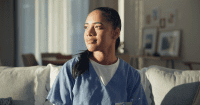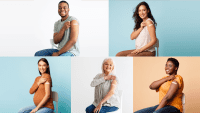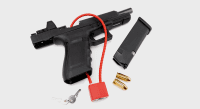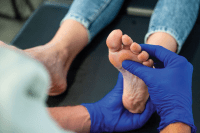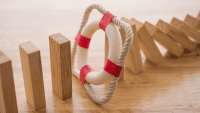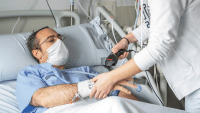Can patients be drivers of innovation within the medical supply category? A good way to start is empowering those with their own medical challenges to create solutions for themselves.
Too often, developers of medical supplies are not patients and are situated in offices, not in medical facilities.
Patients are capable of helping others, while helping themselves. According to UC Davis Medical Center Oncologist Scott Christensen, “Equipping a patient with the knowledge their creation can improve the medical outcome of others only adds to their own healing process.”
The vast community of current and former patients can provide a rich source of ideas based on their actual experience.
Real-life example: I’m a cancer patient who required nine successive surgeries and each time was required to deal with postsurgical drains. In every case, discharge nurses dispensed safety pins with instructions to attach the drains to my clothing. I was disappointed that over 50 years since the invention of suction drains, someone didn’t have a smarter and safer solution. In response, I created a simple mesh apron with a zipper closure to comfortably suspend drains without safety pins. A wonderful example of a patient ideating a solution that in turn assists other patients.
There are other extraordinary patient-driven inventions—a multiport device for infusions, an artificial pancreas, an infusion pole designed for children, to name a few. The adage of “necessity is the mother of invention,” couldn’t be more appropriate than in the world of healthcare development. Creating a solution based on an end-user’s perspective is called “human-centered design.”
Herbert A. Simon, winner of the 1978 Nobel Prize in Economic Sciences, introduced the concept of human-centered design, although it’s been at work since the beginning of time. What Simon’s theory promotes is a way of thinking that’s obsessive about understanding the perspective of the person who experiences a problem, their needs, and whether the solution that has been designed for them is truly meeting their needs effectively.
According to Simon, the best possible discoveries result from empathy—understanding the problem as a result of immersing yourself in the community that will be affected by your design.
Nick is a nurse anesthesiologist. His adopted son Angel lived the first 3 years of his life in the hospital due to poor I.V. line care and bloodstream infections. Nick’s passion to protect his son spurred a simple solution—the Enspero multiport delivery device. It uses color coding to protect patients during the infusion of anesthesia medications
Kiley, an 11-year-old diagnosed with cancer, recognized that poles used in infusion rooms are clumsy. With her dad’s help she developed a backpack with a mini-pole for her infusion bag.
Finally, a team of three inventors with type 1 diabetes designed a system that monitors blood sugar levels during nighttime hours. Using computer code and off-the-shelf hardware, the device handily provides the right insulin dose, even while a patient sleeps.
In Finland, a 2015 study determined that even though 85% of the patient developers reported that their invention solved their own needs and the needs of others, only 19% saw product diffusion in the marketplace.
Sadly, most commercial medical suppliers don’t see a financial benefit to producing small but necessary devices. And most patients, as inventors and innovators, lack the resources to invest in distribution to the extent that would be helpful to others.
The good news is that some hospital providers have started to create their own innovation centers. These centers provide a forum for cross-industry experts to revamp protocols for improving patient outcome. The University of California Davis Medical Center has blueprints for Aggie Square, a campus uniquely designed to engage local entrepreneurs, community members, patients, and residents to uncover creative solutions for day-to-day issues within the medical community.
By incorporating the patients’ narrative in new product research and development, we can create a collaborative model for sustainable and useful products. The key is inclusion. Giving patients a seat at the table.
From re-purposing medical devices, finding new therapies, and developing technological breakthroughs, patients are shaping the healthcare of the future. Patient innovation has the potential to transform healthcare the way open-source software has transformed technology.
So, can patients be drivers of innovation within the medical supply category? According to a Spring 2019 article in MIT Sloan Management Review, “Patients are increasingly able to conceive and develop sophisticated medical devices and services to meet their own needs—often without any help from companies that produce or sell medical products.”
The answer is a definitive yes!









